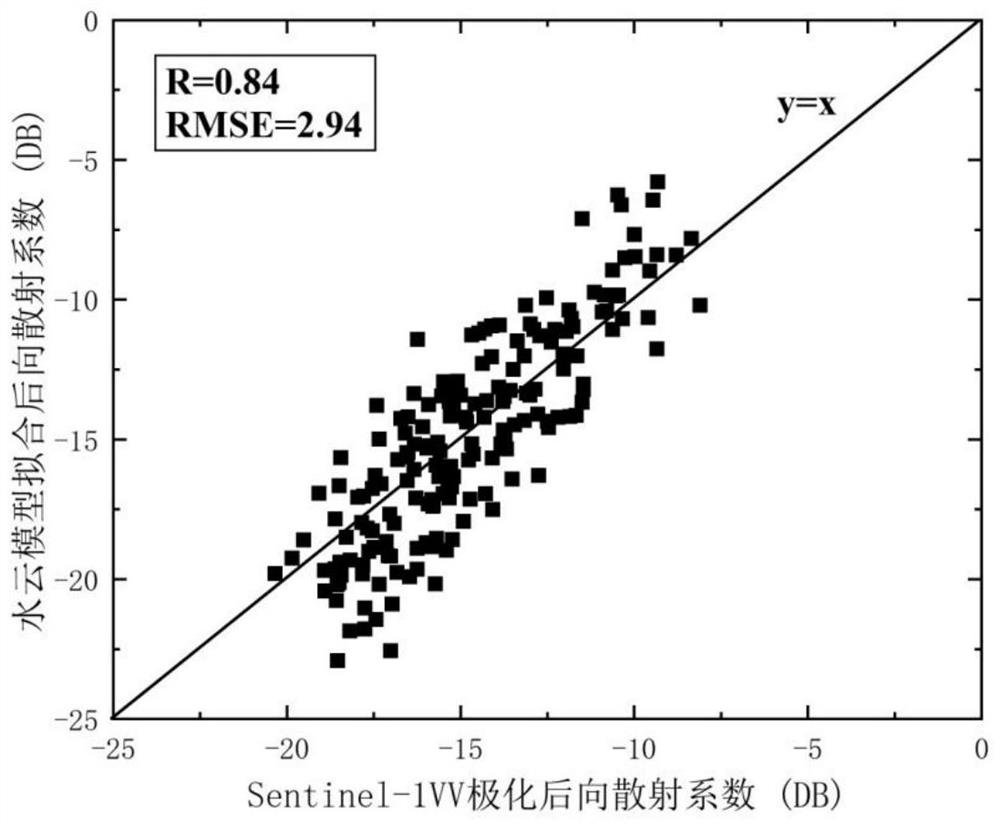Method for monitoring salt content of salinized soil on earth surface under vegetation coverage
A technology of vegetation coverage and salt content, which is applied in measurement devices, scattering characteristic measurement, radio wave measurement systems, etc., can solve problems such as affecting the accuracy of satellite inversion of saline soil, and achieve the effect of high inversion accuracy
- Summary
- Abstract
- Description
- Claims
- Application Information
AI Technical Summary
Problems solved by technology
Method used
Image
Examples
specific Embodiment approach 1
[0042] Specific implementation mode one: the monitoring method of the salinity of surface saline soil under vegetation cover in this implementation mode is carried out according to the following steps:
[0043] Step 1. Prepare SAR radar images and optical satellite images of the study area;
[0044] Step 2. Obtain radar and optical satellite parameters respectively according to the SAR radar image and optical satellite image in step 1, and then use the normalized difference moisture index NDWI to invert the vegetation water content;
[0045] Step 3, using the saline soil dielectric constant model to simulate the complex dielectric constant of saline soil, the saline soil dielectric constant model is expressed as:
[0046]
[0047]
[0048] Among them, ρ b is soil bulk density; S is the salt content of saline soil; m v is the volumetric water content of the soil;
[0049] Step 4, input the complex permittivity into the improved integral equation (AIEM) model to simulat...
Embodiment 1
[0077] Example 1 takes the inversion of salinity in saline soil in western Jilin Province as an example.
[0078] The monitoring method of the salinity content of saline soil on the surface under vegetation cover is carried out according to the following steps:
[0079] Step 1. Prepare SAR radar images and optical satellite images of the study area;
[0080] Step 2. Obtain radar and optical satellite parameters respectively according to the SAR radar image and optical satellite image in step 1, and then use the normalized difference moisture index NDWI to invert the vegetation water content;
[0081] Step 3, using the saline soil dielectric constant model to simulate the complex dielectric constant of saline soil, the saline soil dielectric constant model is expressed as:
[0082]
[0083]
[0084] Among them, ρ s is the dry soil particle density; ρ b is soil bulk density; S (S represents the general formula) represents the salt content of saline soil; m v is the vol...
PUM
 Login to View More
Login to View More Abstract
Description
Claims
Application Information
 Login to View More
Login to View More - R&D
- Intellectual Property
- Life Sciences
- Materials
- Tech Scout
- Unparalleled Data Quality
- Higher Quality Content
- 60% Fewer Hallucinations
Browse by: Latest US Patents, China's latest patents, Technical Efficacy Thesaurus, Application Domain, Technology Topic, Popular Technical Reports.
© 2025 PatSnap. All rights reserved.Legal|Privacy policy|Modern Slavery Act Transparency Statement|Sitemap|About US| Contact US: help@patsnap.com



